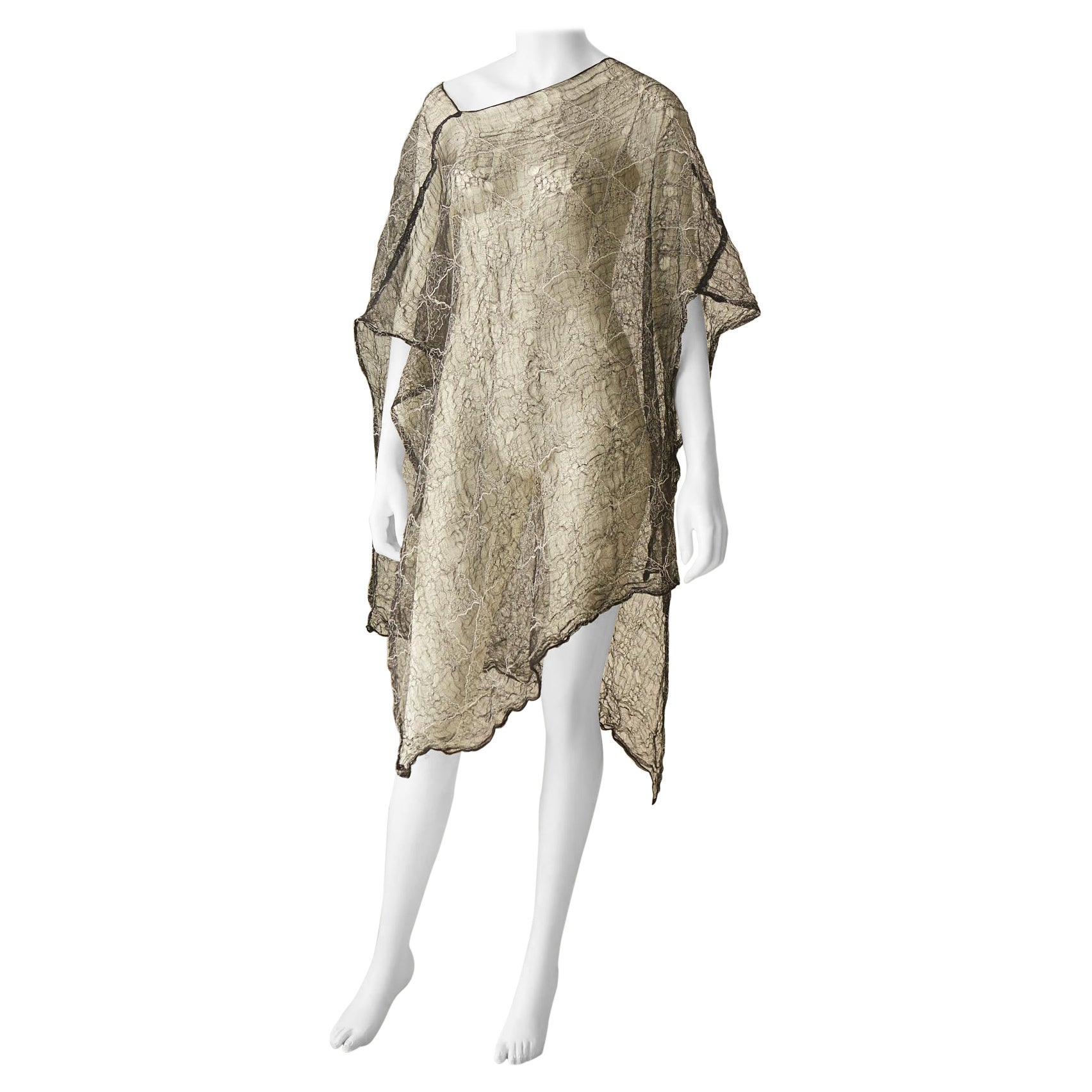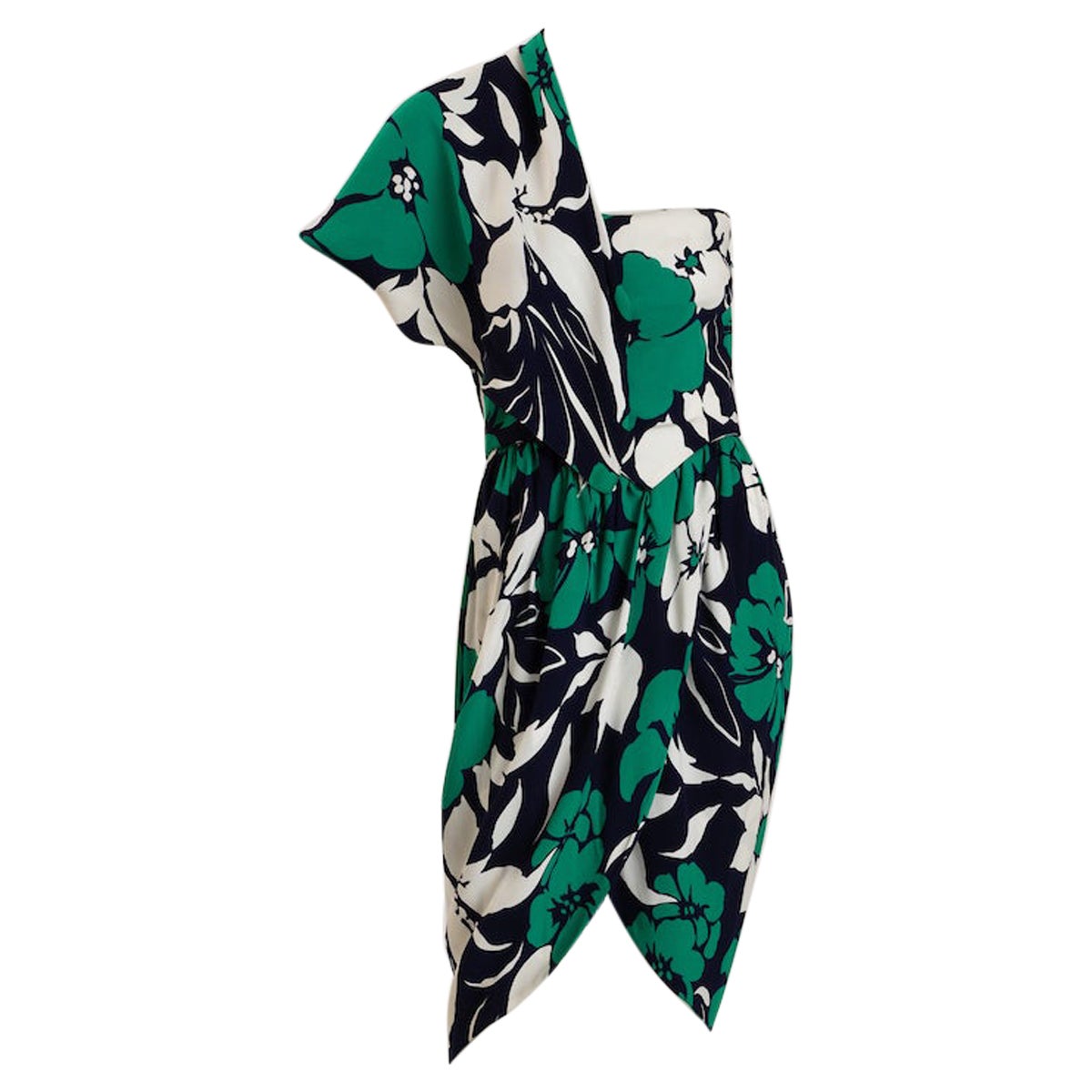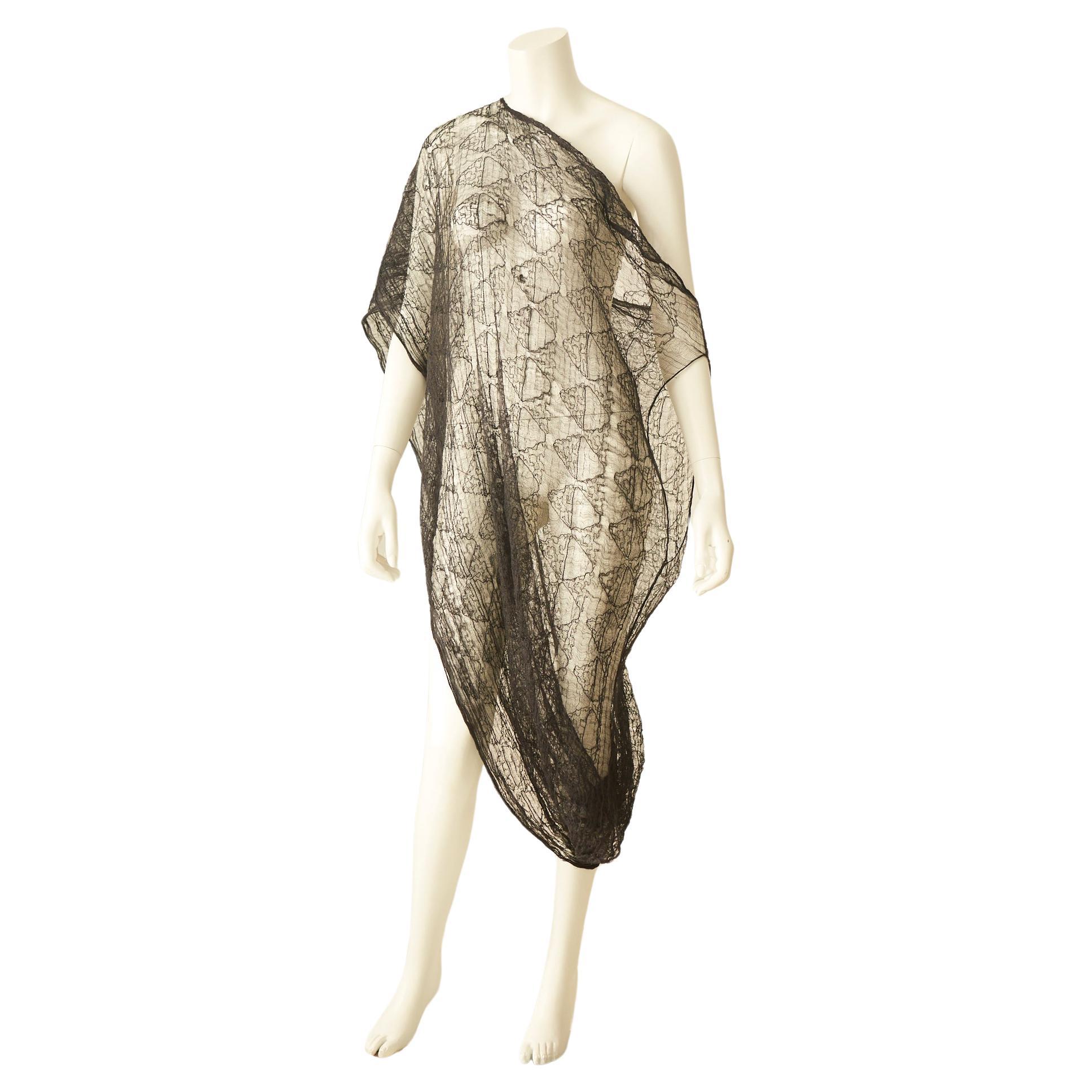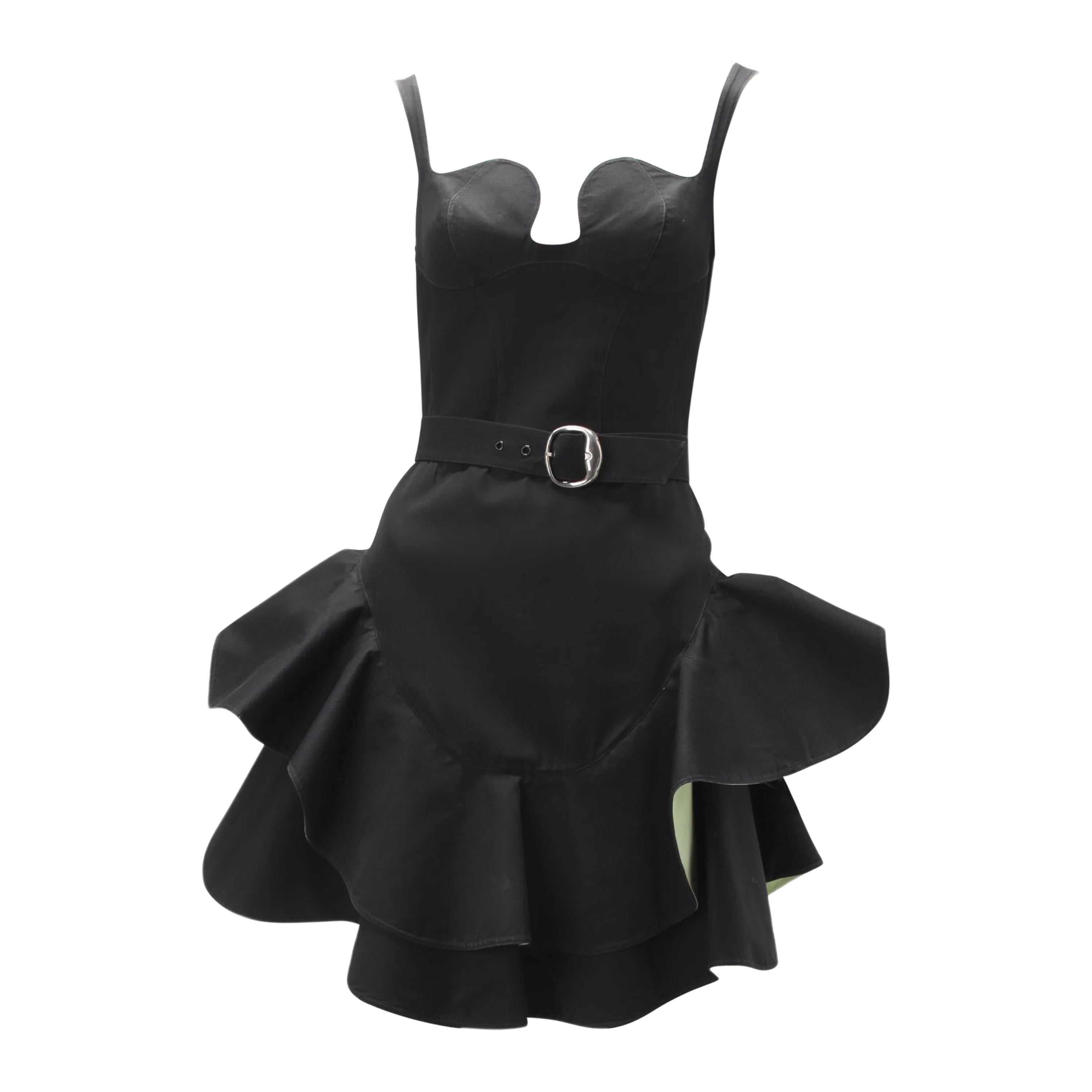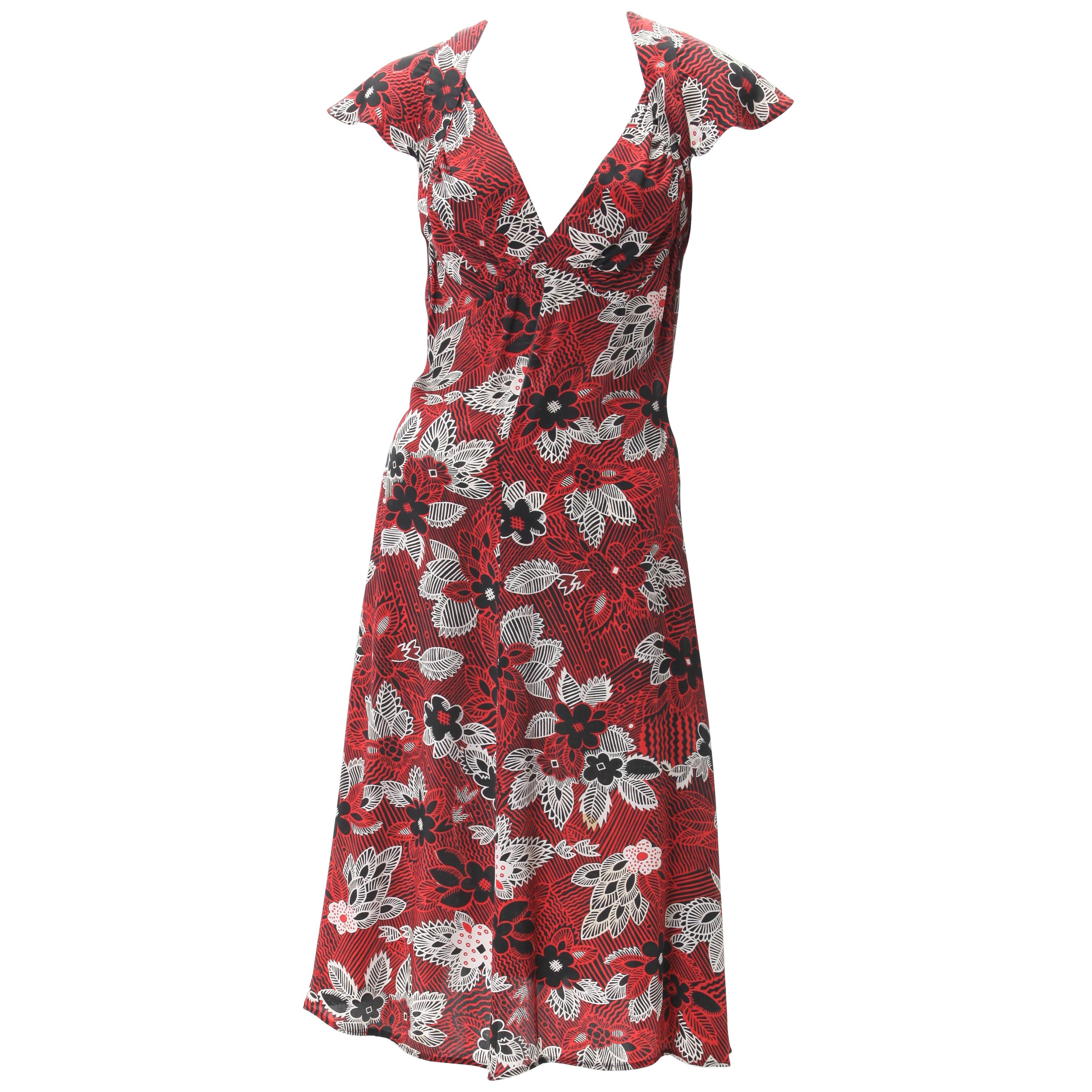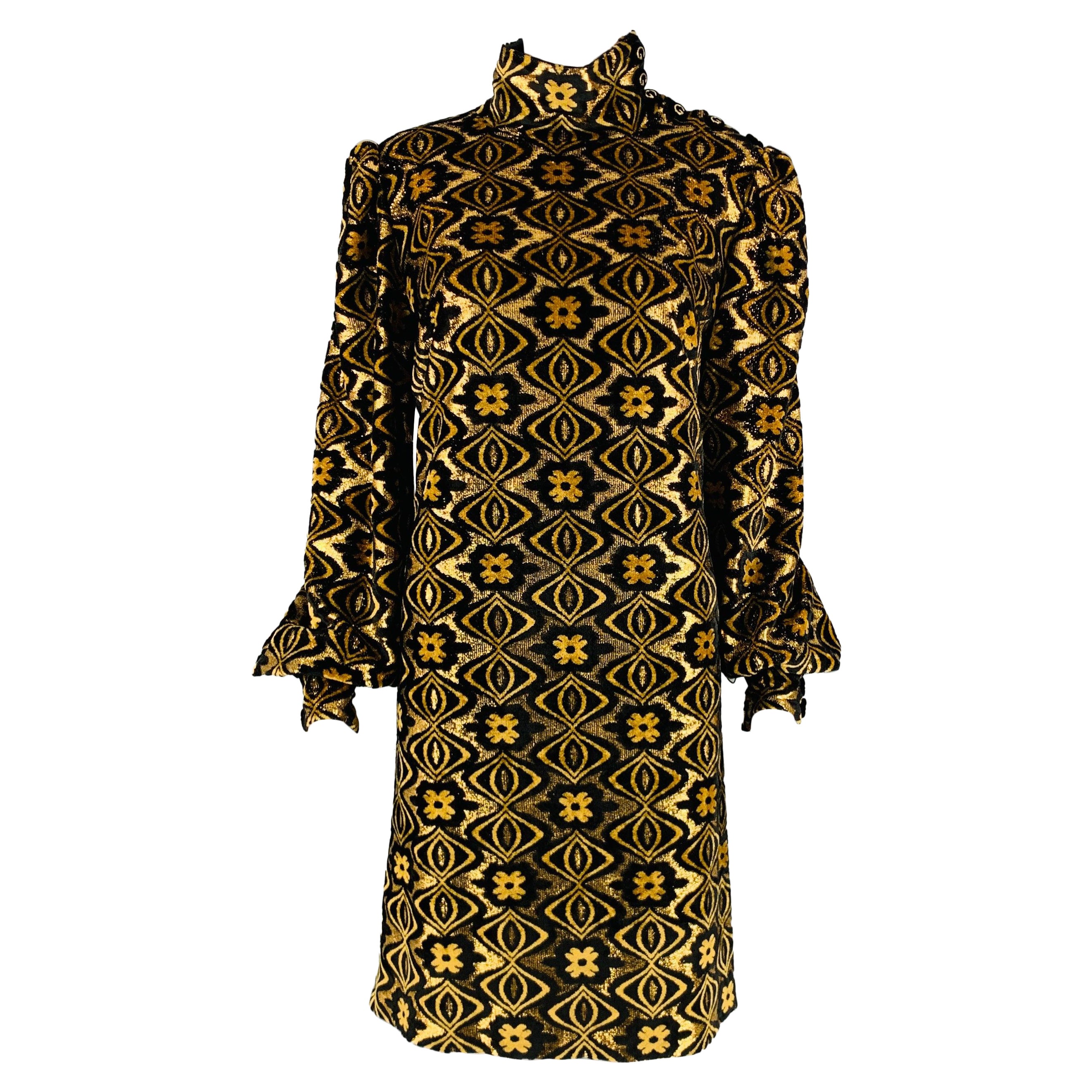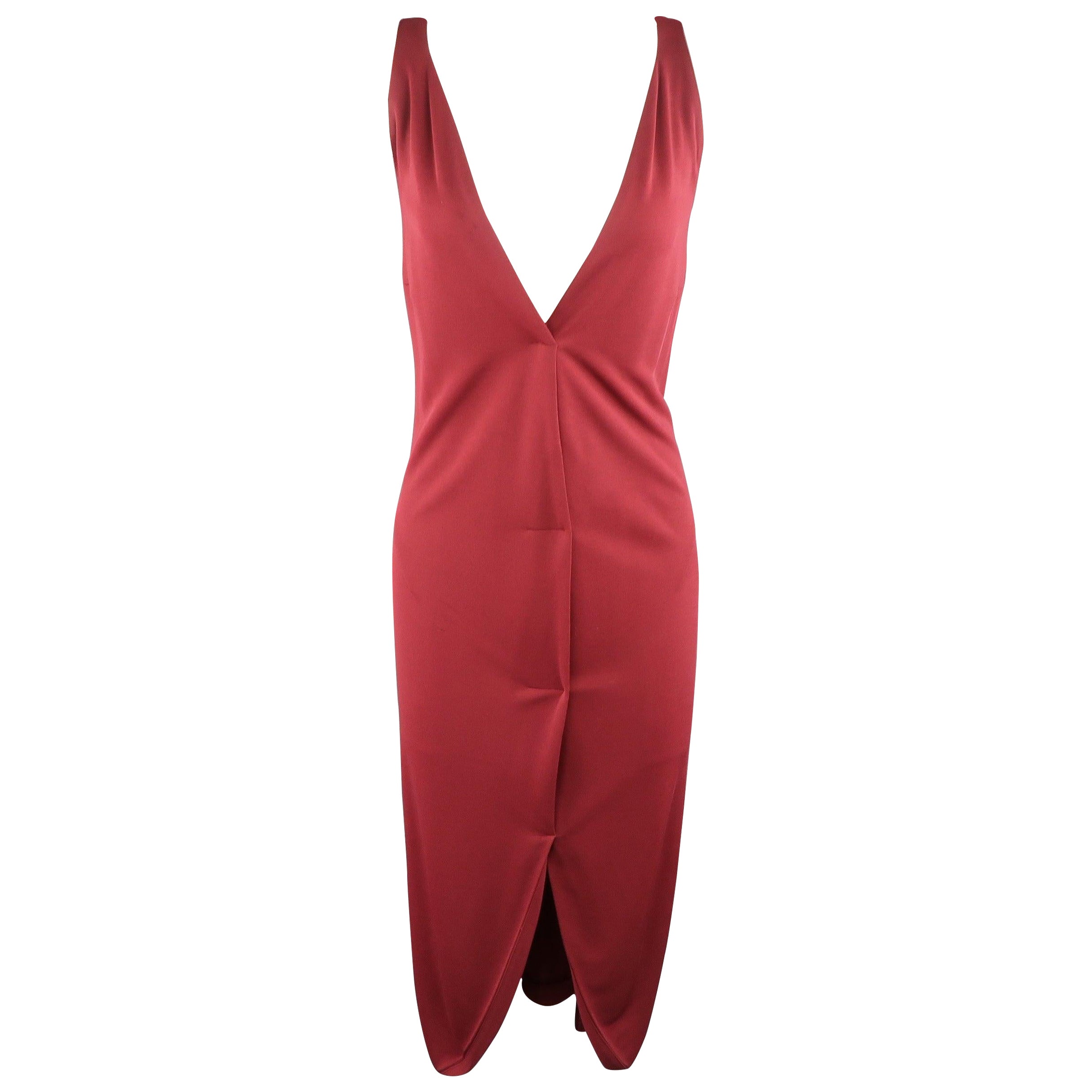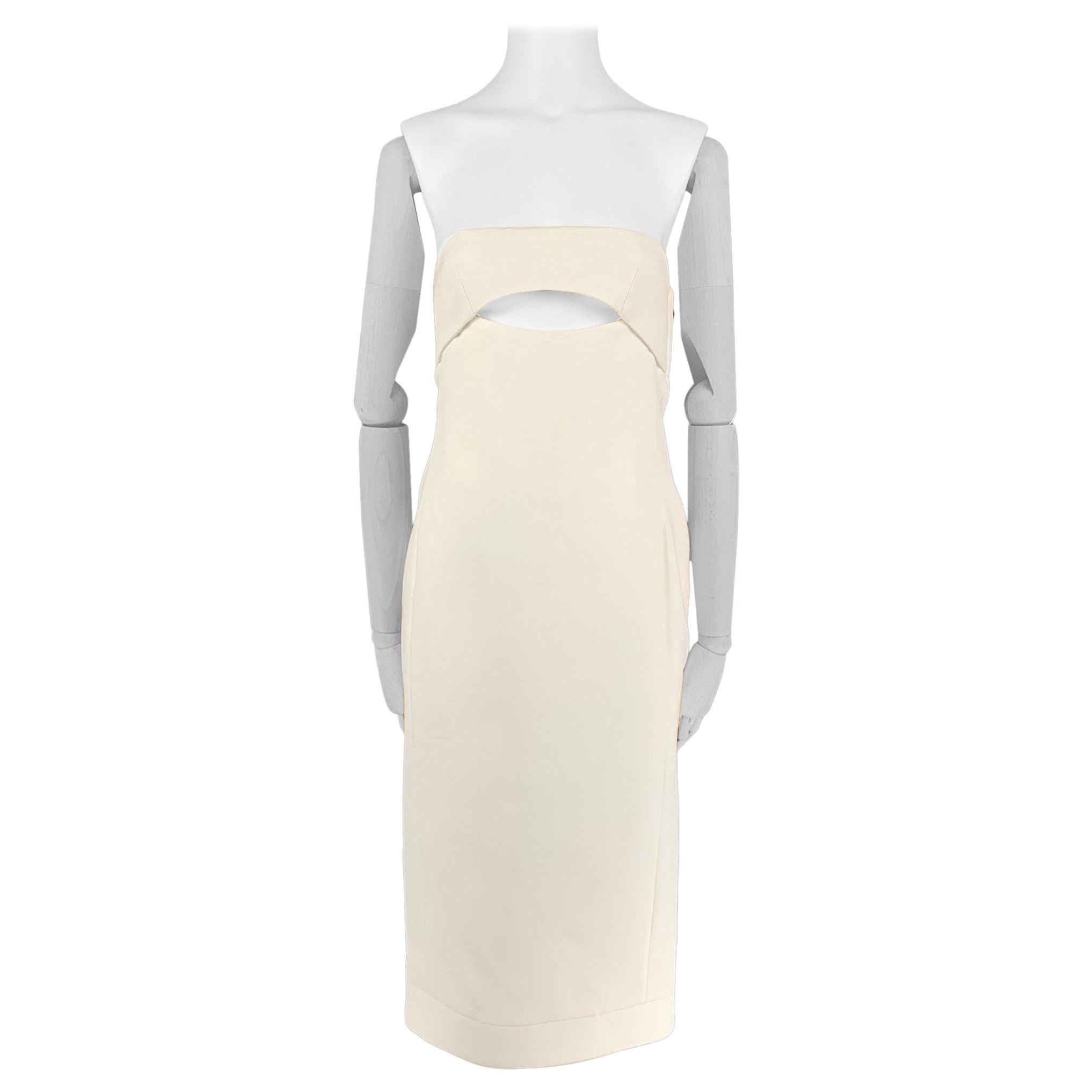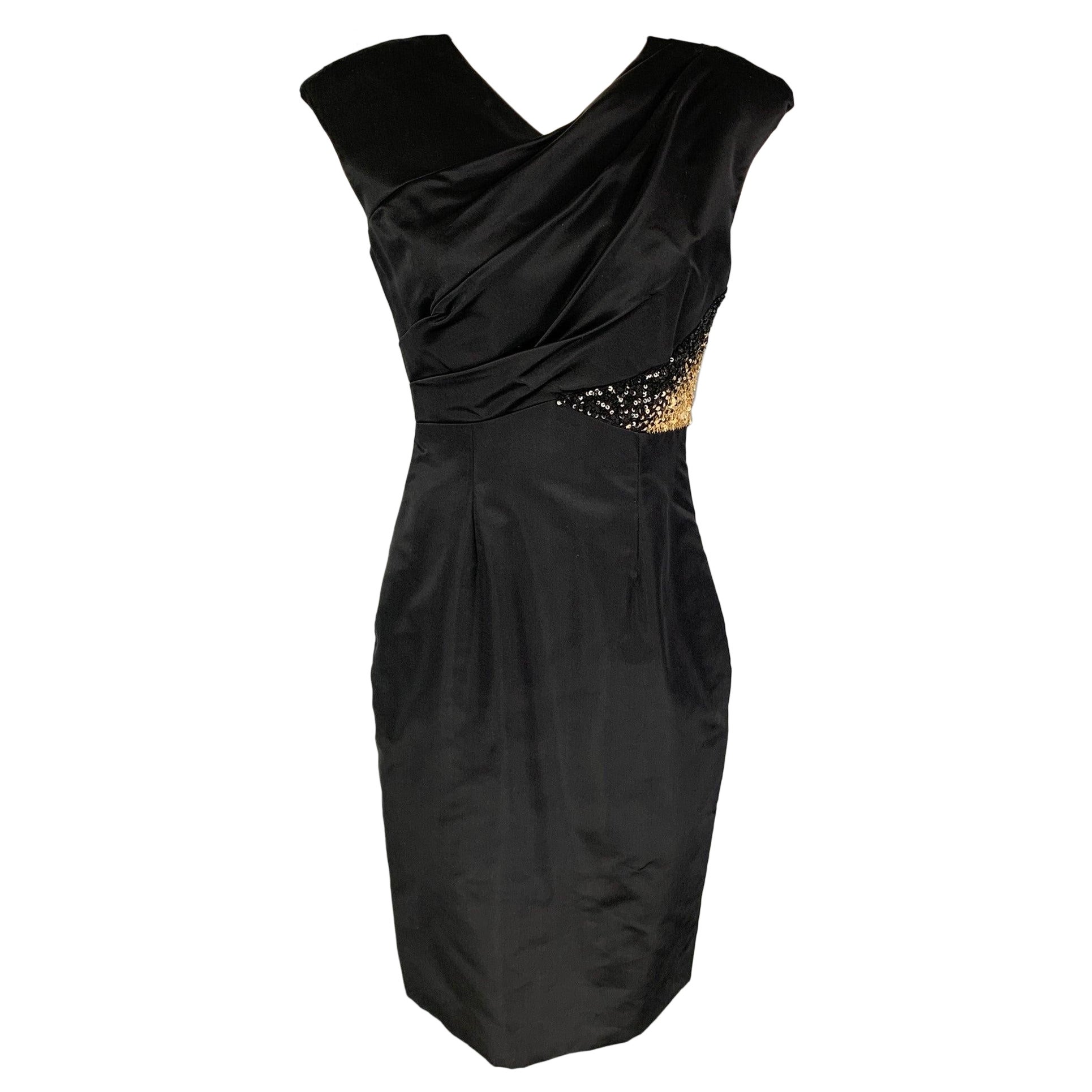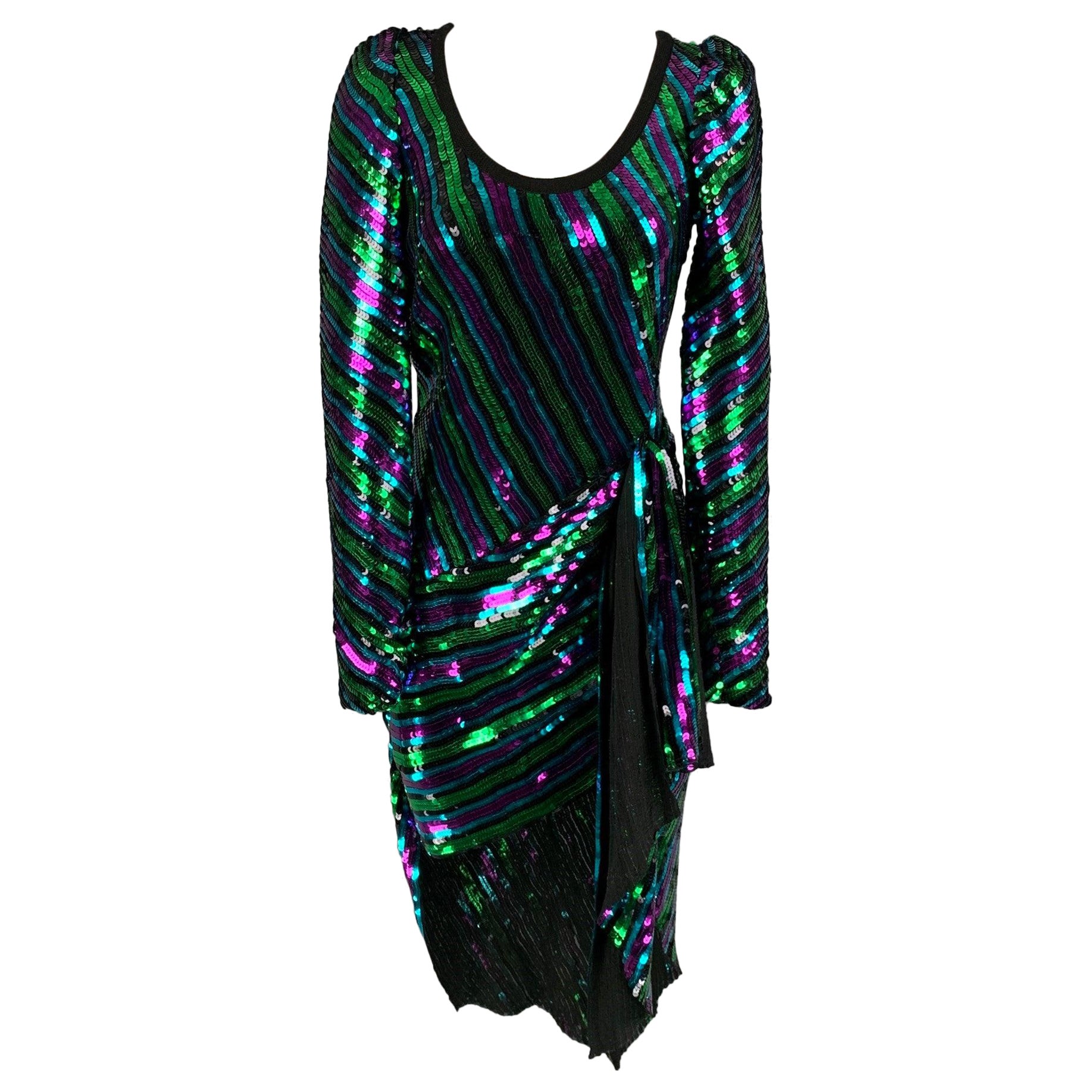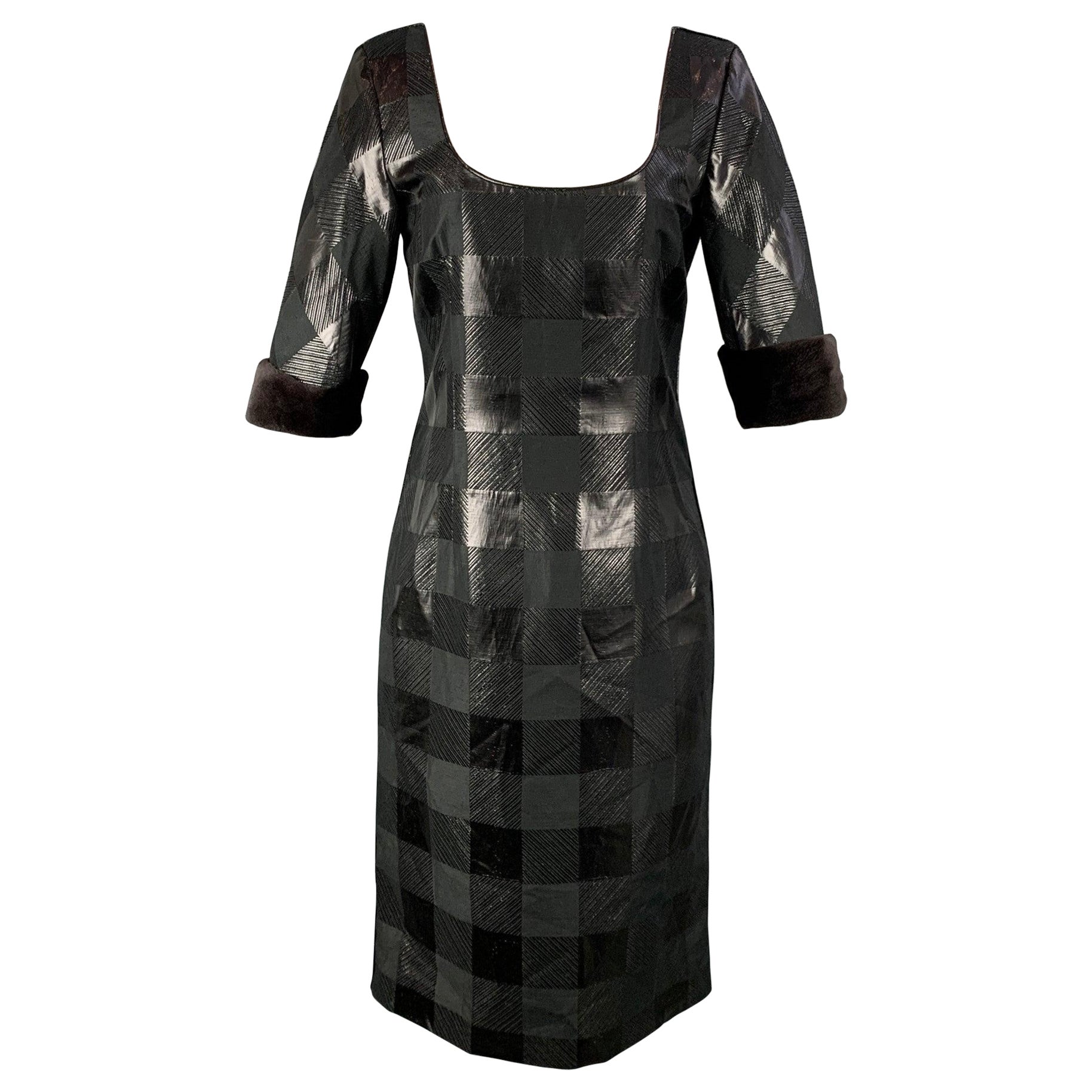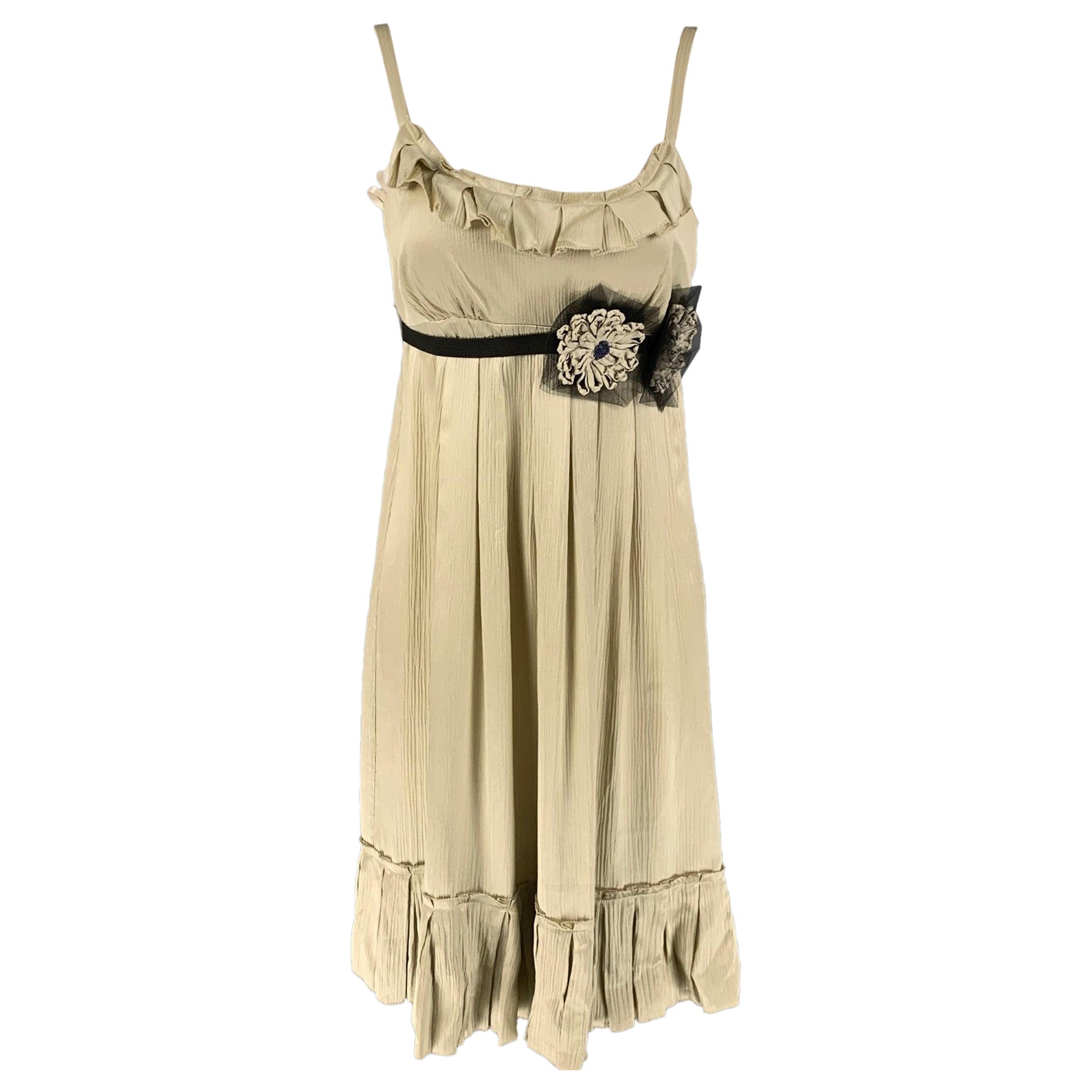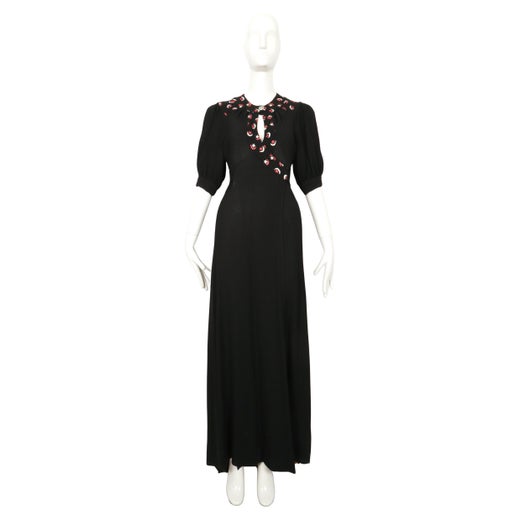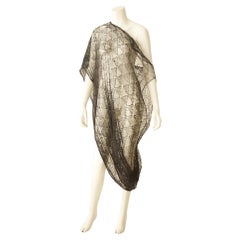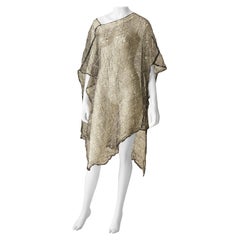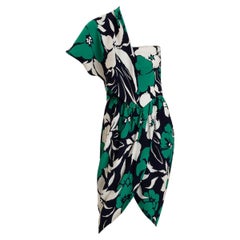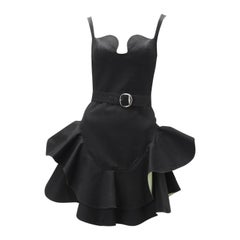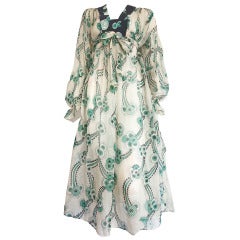
Vintage OSSIE CLARK Celia Birtwell Mystic Daisy silk dress
View Similar Items
Vintage OSSIE CLARK Celia Birtwell Mystic Daisy silk dress
About the Item
- Brand:
- Dimensions:Marked Size: 8 (UK)
- Place of Origin:
- Period:
- Material Notes:100% Silk crepe. Semi-sheer fabrication with print.
- Condition:Wear consistent with age and use. *SLEEVE REPAIR DISCLAIMER* As shown in the photos the main body of the dress is in excellent condition with no rips or stains. As shown in the close-up photos of the ad both sleeves were repaired from some previous tears. The wearer's left sleeve has a vertical seam at the bicep level, and has small repairs at the bottom, rear elbow area, and the rear shoulder area. Due to the gathered construction of the shoulders the repair at the rear shoulder gets lost in the folds of the fabric, and it is hard to see the elbow area repair due to the volume of the sleeve shape, and the detailed nature of the print. On the other sleeve there is a similar, vertical seam at the wearer's right, mid-forearm level, and a small repair just above the seam at the rear of the sleeve. There is also a small repair at the side shoulder area of the sleeve.
- Seller Location:Newport Beach, CA
- Reference Number:1stDibs: AU140331306840
Ossie Clark
It’s hardly an exaggeration to say that neither the Swinging Sixties nor the hippie looks of the 1970s would have been what they were if not for Ossie Clark, who popularized the flamboyant fashion synonymous with the eras.
Born Raymond Clark in 1942, the designer moved as a boy to Oswaldtwistle, the source of his lifelong nickname. Clark began studies in architecture at just 13, a foundation that instilled in him the lessons of proportion and scale that would inform his day dresses, suits and other unique clothing decades later.
After learning tailoring, pattern cutting and more important technical skills at the Regional College of Art in Manchester (now the Manchester School of Art), Clark attended London’s prestigious Royal College of Art. There, he began a lifelong friendship with the artist David Hockney, who would eventually paint a portrait of Clark and his wife and partner, Celia Birtwell, also a designer.
Clark’s graduation show in 1964, featuring at least one garment decorated with a line of light bulbs, made instant waves in the fashion world, foreshadowing the career he would have as a boundary-pushing creative. He landed his first feature in British Vogue just months later and was a veritable instant addition to the London fashion scene. While he was still a student, Clark’s designs were being sold in the famous London boutique Quorum, and Henri Bendel had brought his collection to New York. His fashions soon became inextricably linked with the famous “Chelsea Girls” of the decade.
Clark’s clothing ran the gamut from free-flowing garments in muted hues to graphic patterns in bold colors informed by a fascination with Pop art and flora. He collaborated with Birtwell for most of his career, incorporating her dynamic Art Deco–inspired prints in his work before the couple parted in the 1970s. Clark favored crepes and chiffons and paid close attention to small details, often eschewing simple zippers in favor of, say, fabric-covered buttons. At the end of the 1960s, Clark adjusted hemlines to the maxi length and introduced a line of chiffon dresses intended to be worn over a nude body.
Clark’s penchant for flowing pants, bell sleeves and fringe is largely regarded as popularizing the archetype of 1970s fashion in London and the United States — influence bolstered, no doubt, by his dressing such A-list clients as Mick Jagger, Liza Minelli and The Beatles. A gifted draper, he was known for his uniquely flattering fits. As footwear icon Manolo Blahnik once said, “He created an incredible magic with the body and achieved what fashion should do — produce desire.”
Find vintage Ossie Clark evening dresses, blouses, day dresses and more on 1stDibs.
